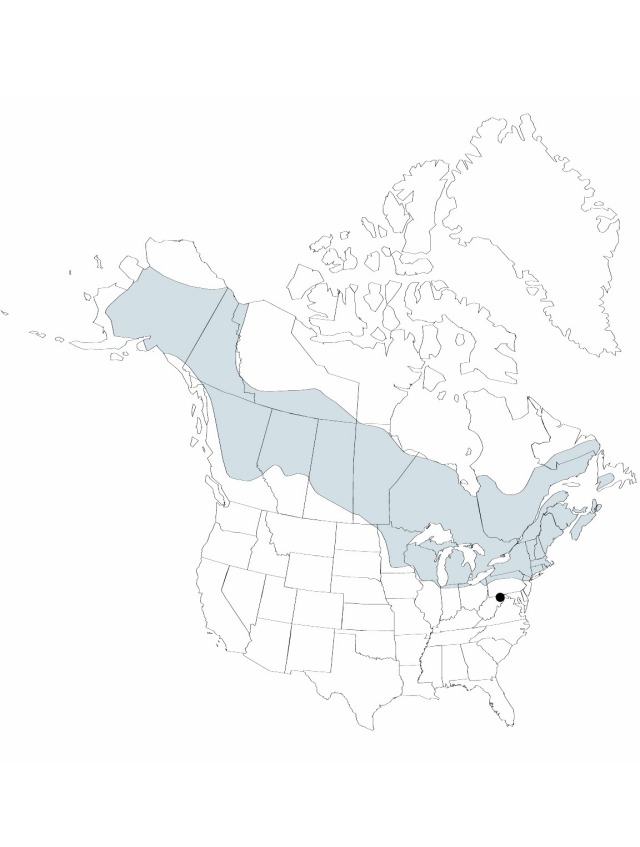Calla palustris
Sp. Pl. 2: 968. 1753.
Roots adventitious, arising from nodes. Rhizomes creeping at or near surface, elongate, 1–3 cm diam. Leaves: petiole 6–30(–40) cm; blade 4–14 cm wide; lateral veins curved-ascending, parallel. Inflorescences: spathe ovate to elliptic, 3–6(–8) cm, apex long-apiculate, 4–10 mm; spadix on thick short stipe, cylindric, shorter than spathe, apex rounded. Flowers covering spadix; stamens (6–)9–12, of 2 types, outer with broad filaments and inner with narrow filaments; ovaries 1-locular; ovules 6–9, anatropous. Infructescences 2–5 × 1.5–3.5 cm. Fruits pear-shaped, 6–12 × 5–10 mm. Seeds brown with dark spots at chalazal end, cylindric, 3–5 mm. 2n = 36.
Phenology: Flowering late spring–summer.
Habitat: Bogs, marshes, wooded swamps, and marshy shores of rivers, ponds, and lakes
Elevation: 0–900 m
Distribution

Alta., B.C., Man., N.B., Nfld. and Labr., N.W.T., N.S., Nunavut, Ont., P.E.I., Que., Sask., Yukon, Alaska, Conn., Ill., Ind., Maine, Md., Mass., Mich., Minn., N.H., N.J., N.Y., N.Dak., Ohio, Pa., R.I., Vt., Wis., Eurasia.
Discussion
Plants with two or three spathes per inflorescence occur; this anomaly is recognized as C. palustris forma polyspathacea Victorin & Rousseau. Calla palustris has been reported from Iowa (T. G. Lammers and A. G. van der Valk 1979), but the only specimen is an unreliable record. The species was also reported from Mendocino County., California (A. Eastwood 1900), but the specimen on which this record is based was destroyed (H. L. Mason 1957). Perhaps this collection was an incorrect identification of Zantedeschia aethiopica, the cultivated calla-lily, which has escaped and naturalized in areas along the California coast (see table 203.1).
Preliminary field studies indicate that species of syrphid flies (Sphegina spp., Diptera: Syrphidae: Milesiinae) are especially common on inflorescences, with occasional visits from the widespread flower fly, Toxomerus geminatus (Diptera: Syrphidae: Syrphinae) (S. A. Thompson 1995).
Flour can be made from the seeds (M. L. Fernald and A. C. Kinsey et al. 1958), and plants are sometimes sold in aquatic garden catalogs for ornamental plantings in bog gardens.
Selected References
None.
